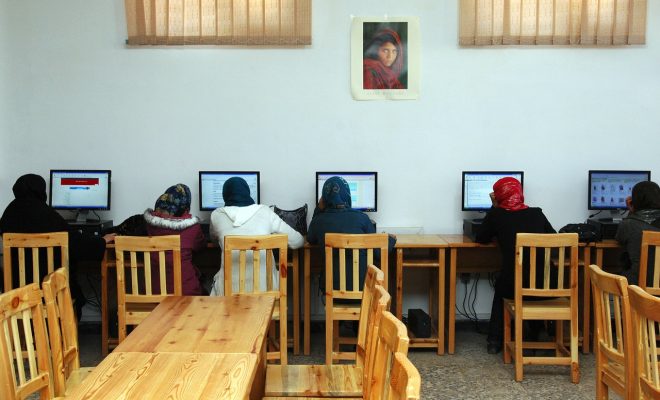K–12 Schools

: Understanding the Structure and Significance of Education
Introduction: The Foundation of Learning
K–12 education plays a pivotal role in the educational framework of many countries, particularly in the United States. This system encompasses kindergarten through 12th grade, representing the full spectrum of primary and secondary education. The K–12 model is designed to provide students with a comprehensive education that prepares them for higher education, careers, and responsible citizenship. This article will explore the structure of K–12 schools, their significance, and the various factors influencing their effectiveness.
Structure of K–12 Schools: Breaking Down the Components
K–12 education is typically divided into three main levels: elementary, middle, and high school. Each level serves distinct developmental stages and educational goals.
Elementary Schools: Building the Basics
Elementary education usually encompasses grades K–5 or K–6, focusing on foundational skills in reading, writing, mathematics, science, and social studies. The primary goal of elementary schools is to create a nurturing environment where young learners can develop their cognitive, social, and emotional skills.
Key Features of Elementary Schools:
Curriculum: The curriculum is often broad, integrating subjects such as art, music, and physical education to promote holistic development.
Teaching Approaches: Educators typically employ a variety of teaching methods, including hands-on activities, group work, and individualized instruction to cater to diverse learning styles.
Parental Involvement: Parents are encouraged to participate in their children’s education through volunteer opportunities and communication with teachers, fostering a strong home-school connection.
Middle Schools: Navigating Adolescence
Middle schools, covering grades 6–8, serve as a transitional phase between elementary and high school. This stage is crucial as students experience significant physical, emotional, and social changes. Middle schools aim to provide a supportive environment to help students navigate these changes.
Key Features of Middle Schools:
Interdisciplinary Curriculum: Middle schools often adopt an interdisciplinary approach, linking subjects to make learning more relevant and engaging.
Advisory Programs: Many middle schools implement advisory programs to provide students with guidance and support, helping them develop important life skills.
Extracurricular Activities: Opportunities for participation in sports, clubs, and arts programs are crucial for fostering social connections and personal interests.
High Schools: Preparing for the Future
High schools, comprising grades 9–12, focus on preparing students for post-secondary education and the workforce. The curriculum becomes more specialized, allowing students to explore their interests and develop skills relevant to their future goals.
Key Features of High Schools:
Advanced Placement (AP) Courses: Many high schools offer AP courses that allow students to earn college credit while still in high school, enhancing their academic profile.
Career and Technical Education (CTE): CTE programs provide students with practical skills and training in various fields, preparing them for immediate entry into the workforce.
College Counseling: High schools often have dedicated counselors to assist students with college applications, scholarships, and career planning.
Significance of K–12 Education: The Impact on Society
K–12 education is not only critical for individual students but also has far-reaching implications for society as a whole.
Economic Growth: A well-educated workforce is essential for economic development. K–12 schools equip students with the skills necessary for higher education and employment, contributing to a more competitive economy.
Social Equity: Access to quality K–12 education can help bridge socioeconomic gaps. Programs aimed at disadvantaged communities can provide opportunities for all children to succeed.
Civic Engagement: Education fosters informed citizens who are more likely to participate in civic activities, such as voting and community service, strengthening democratic processes.
Challenges Facing K–12 Schools: Addressing the Issues
Despite their importance, K–12 schools face numerous challenges that can hinder their effectiveness.
Funding Disparities: Many schools, particularly in low-income areas, struggle with inadequate funding, leading to a lack of resources, outdated materials, and insufficient staff.
Teacher Shortages: A shortage of qualified teachers can negatively impact student learning. Factors such as low salaries, high stress, and lack of support contribute to this issue.
Standardized Testing: The emphasis on standardized testing can create a narrow focus on test preparation rather than comprehensive learning, limiting students' critical thinking and creativity.
Technological Integration: The rapid advancement of technology presents both opportunities and challenges. Schools must adapt to integrate technology effectively while ensuring all students have access to the necessary tools.
Innovations in K–12 Education: Embracing Change
To address these challenges, K–12 schools are increasingly adopting innovative practices and technologies.
Personalized Learning: Tailoring education to meet the individual needs of students can enhance engagement and improve outcomes. Schools are using data to track student progress and adjust teaching methods accordingly.
Blended Learning: Combining traditional classroom instruction with online learning offers flexibility and can cater to various learning styles. This approach allows students to learn at their own pace.
Social-Emotional Learning (SEL): Recognizing the importance of mental health, many schools are incorporating SEL programs to support students' emotional well-being and interpersonal skills.
Conclusion: The Future of K–12 Education
K–12 schools are a cornerstone of society, shaping the minds and futures of millions of students. While challenges persist, ongoing innovations and a commitment to equity can help create a more effective and inclusive education system. As the landscape of education continues to evolve, it is imperative to support K–12 schools in their mission to prepare the next generation for success in an increasingly complex world. By investing in education, we invest in our future, ensuring that every child has the opportunity to learn, grow, and thrive.K–12 Schools: Understanding the Structure and Significance of Education
Introduction: The Foundation of Learning
K–12 education plays a pivotal role in the educational framework of many countries, particularly in the United States. This system encompasses kindergarten through 12th grade, representing the full spectrum of primary and secondary education. The K–12 model is designed to provide students with a comprehensive education that prepares them for higher education, careers, and responsible citizenship. This article will explore the structure of K–12 schools, their significance, and the various factors influencing their effectiveness.
Structure of K–12 Schools: Breaking Down the Components
K–12 education is typically divided into three main levels: elementary, middle, and high school. Each level serves distinct developmental stages and educational goals.
Elementary Schools: Building the Basics
Elementary education usually encompasses grades K–5 or K–6, focusing on foundational skills in reading, writing, mathematics, science, and social studies. The primary goal of elementary schools is to create a nurturing environment where young learners can develop their cognitive, social, and emotional skills.
Key Features of Elementary Schools:
Curriculum: The curriculum is often broad, integrating subjects such as art, music, and physical education to promote holistic development.
Teaching Approaches: Educators typically employ a variety of teaching methods, including hands-on activities, group work, and individualized instruction to cater to diverse learning styles.
Parental Involvement: Parents are encouraged to participate in their children’s education through volunteer opportunities and communication with teachers, fostering a strong home-school connection.
Middle Schools: Navigating Adolescence
Middle schools, covering grades 6–8, serve as a transitional phase between elementary and high school. This stage is crucial as students experience significant physical, emotional, and social changes. Middle schools aim to provide a supportive environment to help students navigate these changes.
Key Features of Middle Schools:
Interdisciplinary Curriculum: Middle schools often adopt an interdisciplinary approach, linking subjects to make learning more relevant and engaging.
Advisory Programs: Many middle schools implement advisory programs to provide students with guidance and support, helping them develop important life skills.
Extracurricular Activities: Opportunities for participation in sports, clubs, and arts programs are crucial for fostering social connections and personal interests.
High Schools: Preparing for the Future
High schools, comprising grades 9–12, focus on preparing students for post-secondary education and the workforce. The curriculum becomes more specialized, allowing students to explore their interests and develop skills relevant to their future goals.
Key Features of High Schools:
Advanced Placement (AP) Courses: Many high schools offer AP courses that allow students to earn college credit while still in high school, enhancing their academic profile.
Career and Technical Education (CTE): CTE programs provide students with practical skills and training in various fields, preparing them for immediate entry into the workforce.
College Counseling: High schools often have dedicated counselors to assist students with college applications, scholarships, and career planning.
Significance of K–12 Education: The Impact on Society
K–12 education is not only critical for individual students but also has far-reaching implications for society as a whole.
Economic Growth: A well-educated workforce is essential for economic development. K–12 schools equip students with the skills necessary for higher education and employment, contributing to a more competitive economy.
Social Equity: Access to quality K–12 education can help bridge socioeconomic gaps. Programs aimed at disadvantaged communities can provide opportunities for all children to succeed.
Civic Engagement: Education fosters informed citizens who are more likely to participate in civic activities, such as voting and community service, strengthening democratic processes.
Challenges Facing K–12 Schools: Addressing the Issues
Despite their importance, K–12 schools face numerous challenges that can hinder their effectiveness.
Funding Disparities: Many schools, particularly in low-income areas, struggle with inadequate funding, leading to a lack of resources, outdated materials, and insufficient staff.
Teacher Shortages: A shortage of qualified teachers can negatively impact student learning. Factors such as low salaries, high stress, and lack of support contribute to this issue.
Standardized Testing: The emphasis on standardized testing can create a narrow focus on test preparation rather than comprehensive learning, limiting students' critical thinking and creativity.
Technological Integration: The rapid advancement of technology presents both opportunities and challenges. Schools must adapt to integrate technology effectively while ensuring all students have access to the necessary tools.
Innovations in K–12 Education: Embracing Change
To address these challenges, K–12 schools are increasingly adopting innovative practices and technologies.
Personalized Learning: Tailoring education to meet the individual needs of students can enhance engagement and improve outcomes. Schools are using data to track student progress and adjust teaching methods accordingly.
Blended Learning: Combining traditional classroom instruction with online learning offers flexibility and can cater to various learning styles. This approach allows students to learn at their own pace.
Social-Emotional Learning (SEL): Recognizing the importance of mental health, many schools are incorporating SEL programs to support students' emotional well-being and interpersonal skills.
Community Engagement: Strengthening the relationship between schools and local communities can enhance educational outcomes. By involving parents, local businesses, and organizations, schools can create a more supportive environment for students.
Conclusion: The Future of K–12 Education
K–12 schools are a cornerstone of society, shaping the minds and futures of millions of students. While challenges persist, ongoing innovations and a commitment to equity can help create a more effective and inclusive education system. As the landscape of education continues to evolve, it is imperative to support K–12 schools in their mission to prepare the next generation for success in an increasingly complex world. By investing in education, we invest in our future, ensuring that every child has the opportunity to learn, grow, and thrive.
In summary, K–12 education is not merely a stepping stone but a vital foundation that influences individual lives and society as a whole. It serves as a critical launching pad for lifelong learning, equipping students with the skills, knowledge, and social competencies necessary to navigate the challenges of the modern world.





